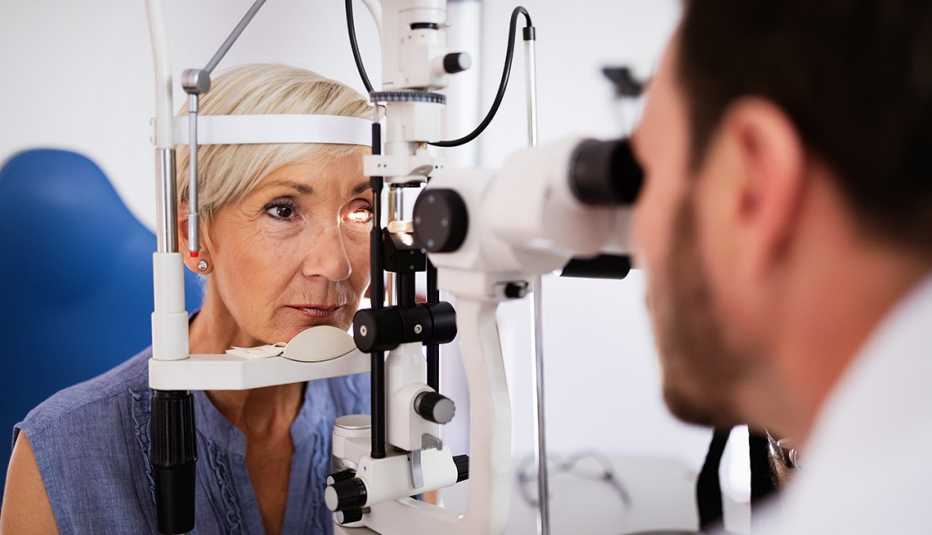Staying Fit


One undeniable fact of aging: We’re more at risk for a range of eye problems as the years pass. When we reach our 40s, we are likely to begin to experience minor vision issues, such as difficulty reading the newspaper (a condition known as presbyopia), and our eyes may become drier and more sensitive to light and wind. Floaters — tiny specks that float across our field of vision — are also more common when we get older.
The good news is that major vision loss is not a natural part of aging, although our risk for it does rise. The leading causes of blindness — macular degeneration, diabetic retinopathy, glaucoma and cataracts — are primarily age-related. And the number of older Americans with vision impairment is large and growing. About 12 million U.S. adults age 40 and over have vision impairment, including 1 million who are blind, according to the Centers for Disease Control and Prevention. That number is projected to more than double by 2050, as the population ages and more people develop diabetes and other chronic conditions.


AARP Membership— $12 for your first year when you sign up for Automatic Renewal
Get instant access to members-only products and hundreds of discounts, a free second membership, and a subscription to AARP the Magazine.
But some causes of vision loss can be prevented or treated successfully before damage progresses: “It’s really a matter of catching things early,” says Mitchell Brinks, M.D., an assistant professor of ophthalmology at the Oregon Health & Science University School of Medicine.
Here’s what to watch for.
Macular Degeneration
Macular degeneration, also known as age-related macular degeneration, or AMD, is a leading cause of vision loss among Americans over age 50. More than 10 million Americans have AMD, and about 2.2 million have advanced vision-threatening cases.
In the “dry” form of this disease, small deposits called drusen dry out the macula — the part of the eye that gives us our central vision and allows us to see in great detail and in vivid color. In the more damaging “wet” form, abnormal blood vessels grow under the macula, causing them to leak fluid or bleed.
AMD may not cause complete blindness, but it can lead to the loss of central vision and make it harder to see faces, drive and do other tasks. Some vitamins and minerals, especially those found in leafy green vegetables, may mitigate its effects.

































































More on health
New Vision Tests and Technology Can Help Save Your Sight
Open your eyes to these bright new solutionsDo You Have Night Blindness?
The vision problem can leave you feeling lost when the lights are lowWhat Color Blindness Looks Like
Get the facts on this often-misunderstood vision issue